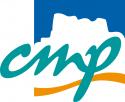UB04 Session 4
Date: Tuesday 20 March 2018
Time: 17:30 - 19:30
Location / Room: Booth 1, Exhibition Area
| Label | Presentation Title Authors |
|---|---|
| UB04.1 | EWCMS: AN EMBEDDED WALK-CYCLE MONITORING SYSTEM USING BODY AREA COMMUNICATION AND SECURE LOW-POWER DYNAMIC SIGNALING Authors: Shahzad Muzaffar1 and Ibrahim (Abe) M. Elfadel2 1Masdar Institute, Khalifa University of Science and Technology, AE; 2Khalifa University of Science and Technology, AE Abstract The demo presents a novel ultra-low power, embedded, and wearable walk-cycle monitoring system with applications in areas such as healthcare, robotics, sports medicine, physical therapy, prosthesis, and animal sports. Customized shoes with sensors continuously measure the forces, and an electronic digital assistant is used to analyze the acquired measurements in real time by employing an IMU free and self-synchronizing method in order to estimate weight and study motion patterns. To achieve ultra-low power operation, the human body is used as a communication medium between the sensors and the digital assistant. The single-channel behavior of the human body is accommodated with a novel, simple yet robust single-wire signaling technique, Pulsed-Index Communication (PIC), that significantly reduces the system footprint and overall power consumption as it eliminates the need for clock and data recovery. The system prototype has been rigorously and successfully tested. More information ... |
| UB04.2 | GENERATING FULL-CUSTOM SCHEMATICS IN A MIXED-SIGNAL TOP-DOWN DESIGN FLOW Authors: Tobias Markus1, Markus Mueller2 and Ulrich Bruening1 1University of Heidelberg, DE; 2Extoll GmbH, DE Abstract Design time is one of the precious assets in the cycle of hardware design. The top down methodology has been used in digital designs very successfully and now we also apply it for analog and mixed signal designs. Generating most of the structures automatically saves time and avoids errors. A Top Down Design Flow for Mixed Signal Designs is used which generates the schematic structure from the system RNM representation. Since the structural verilog part of the system level design will automatically generate the schematic structure it is only the functional part which is missing and has to be implemented by the analog designer. Some often used blocks can be used as an entry point to partially generate parts of the design in the schematic and furthermore even parts of the layout. We will demonstrate this design method with an example project. More information ... |
| UB04.3 | PRIME: PLATFORM- AND APPLICATION-AGNOSTIC RUN-TIME POWER MANAGEMENT OF HETEROGENEOUS EMBEDDED SYSTEMS Authors: Domenico Balsamo, Graeme M. Bragg, Charles Leech and Geoff V. Merrett, University of Southampton, GB Abstract Increasing energy efficiency and reliability at runtime is a key challenge of heterogeneous many-core systems. We demonstrate how contributions from the PRiME project integrate to enable application- and platform-agnostic runtime management that respects application performance targets. We consider opportunities to enable runtime management across the system stack and we enable cross-layer interactions to trade-off power and reliability with performance and accuracy. We consider a system as three distinct layers, with abstracted communication between them, which enables the direct comparison of different approaches, without requiring specific application or platform knowledge. Application-agnostic runtime management is demonstrated with a selection of runtime managers from PRiME, including linear regression modelling and predictive thermal management, operating across multiple applications. Platform-independent runtime management is demonstrated using two heterogeneous platforms. More information ... |
| UB04.4 | OTPG: SPECIFICATION-BASED CONSTRUCTION OF ONLINE TPGS FOR MICROPROCESSORS Authors: Mikhail Chupilko, Alexander Kamkin and Andrei Tatarnikov, ISP RAS, RU Abstract This work presents an approach to construction of online test program generators (TPGs). The approach is intended to use specifications of ISA presented in nML/mmuSL specification languages. They are processed by a meta-generator to obtain their binary representations supplied with meta information and a test generation core compatible with the target microprocessor. The test generation core is loaded as a binary image into the target microprocessor's memory (for experiments we're using QEMU for MIPS) and produces test cases to be processed (incl. results checking) by an executor. It should be noticed that the meta-generator and the executor are not obligatory run at the same microprocessor (especially, if it is highly incomplete). The final goal of the project is to propose a method of obtaining online TPGs for a wide range of ISAs, and to develop a mature tool implementing this method. More information ... |
| UB04.7 | T-CREST: THE OPEN-SOURCE REAL-TIME MULTICORE PROCESSOR Authors: Martin Schoeberl, Luca Pezzarossa and Jens Sparsø, Technical University of Denmark, DK Abstract Future real-time systems, such as advanced control systems or real-time image recognition, need more powerful processors, but still a system where the worst-case execution time (WCET) can be statically predicted. Multicore processors are one answer to the need for more processing power. However, it is still an open research question how to best organize and implement time-predictable communication between processing cores. T-CREST is an open-source multicore processor for research on time-predictable computer architecture. In consists of several Patmos processors connected by various time-predictable communication structures: access to shared off-chip, access to shared on-chip memory, and the Argo network-on-chip for fast inter-processor communication. T-CREST is supported by open-source development tools, such as compilation and WCET analysis. To best of our knowledge, T-CREST is the only fully open-source architecture for research on future real-time multicore architectures. More information ... |
| UB04.10 | EXPERIENCE-BASED AUTOMATION OF ANALOG IC DESIGN Authors: Florian Leber and Juergen Scheible, Reutlingen University, DE Abstract While digital design automation is highly developed, analog design automation still remains behind the demands. Previous circuit synthesis approaches, which are usually based on optimization algorithms, do not satisfy industrial requirements. A promising alternative is given by procedural approaches (also known as "generators"): They (a) emulate experts' decisions, thus (b) make expert knowledge re-usable and (c) can consider all relevant aspects and constraints implicitly. Nowadays, generators are successfully applied in analog layout (Pcells, Pycells). We aim at an entire design flow completely based on procedural automation techniques. This flow will consist of procedures for the generation of schematics and layouts for every typical analog circuit class, such as amplifier, bandgap, filter a.s.o. In our presentation we give an overview on such a design flow and we show an approach for capturing an analog circuit designer's strategy as an executable "expert design plan". More information ... |
| 19:30 | End of session |











